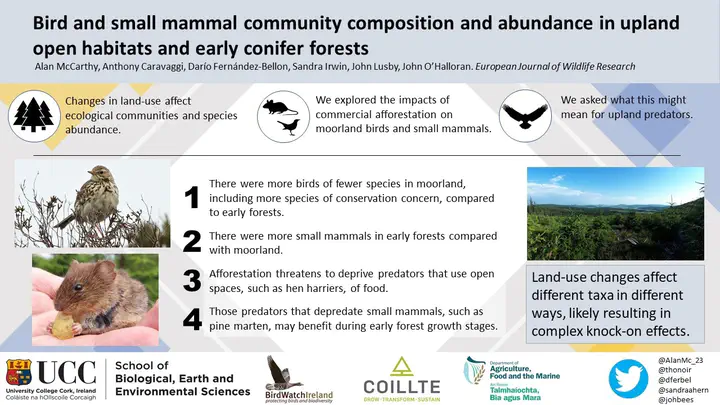Bird and small mammal community composition and abundance in upland open habitats and early conifer forests

Abstract
Anthropogenic land-use change, such as commercial afforestation, is a significant driver of shifts in ecological communities and species abundance. In this study, the consequences of afforestation of upland habitats for two distinct animal groups, birds and small mammals, were examined by comparing open moorland, early pre-thicket conifer forests (2–4 years post-replanting) and late pre-thicket conifer forests (6–8 years post-replanting) across 24 upland study sites in Ireland. Field data were collected using bird point counts, live trapping of small mammals and detailed vegetation surveys. A total of 17 bird species and four small mammal species were detected. Both groups showed contrasting patterns of abundance between moorland and pre-thicket forests, with bird density being higher in moorland, while small mammal abundance was higher in pre-thicket forests. Bird diversity was lowest in moorland and highest in late pre-thicket forests, while small mammal diversity was highest in moorland and lowest in late pre-thicket forests. Our study shows that afforestation can alter the abundance and community composition of bird and small mammal populations and that the consequences of land-use change associated with afforestation in upland areas vary across different taxa. Our findings have important implications for forest management practices and conservation of upland habitats and species.